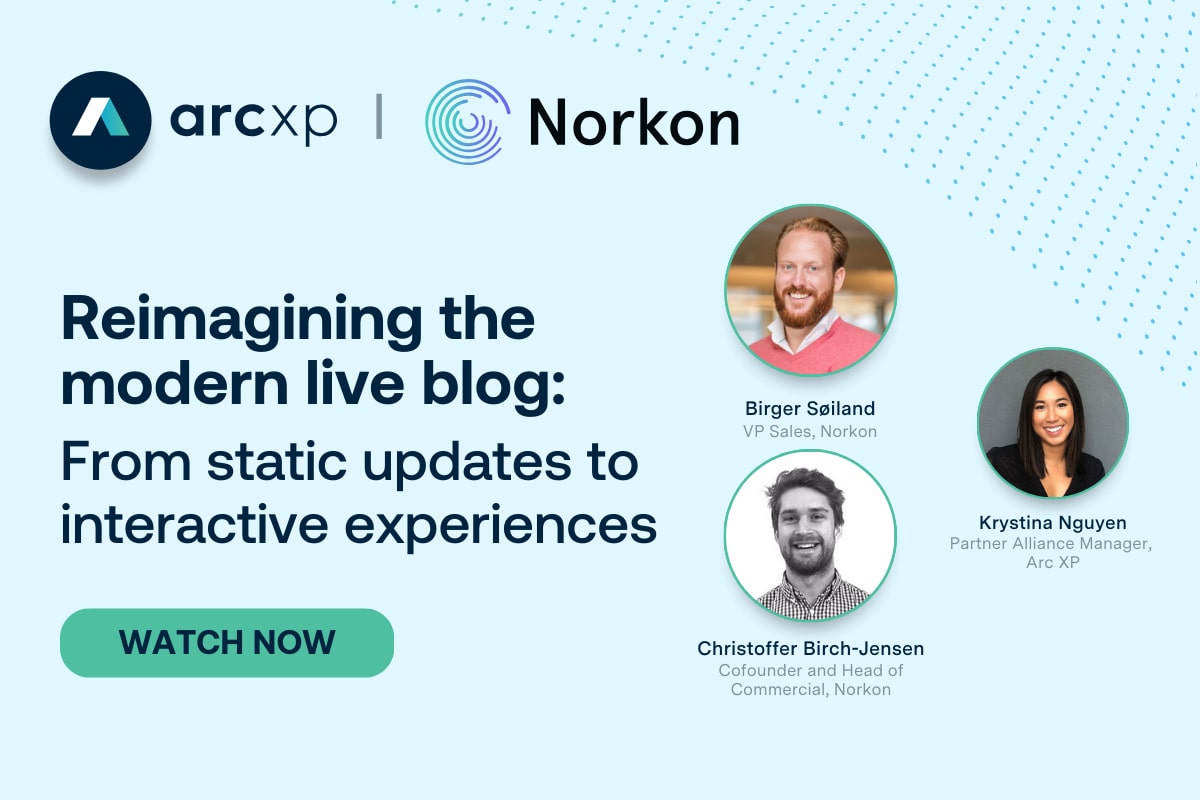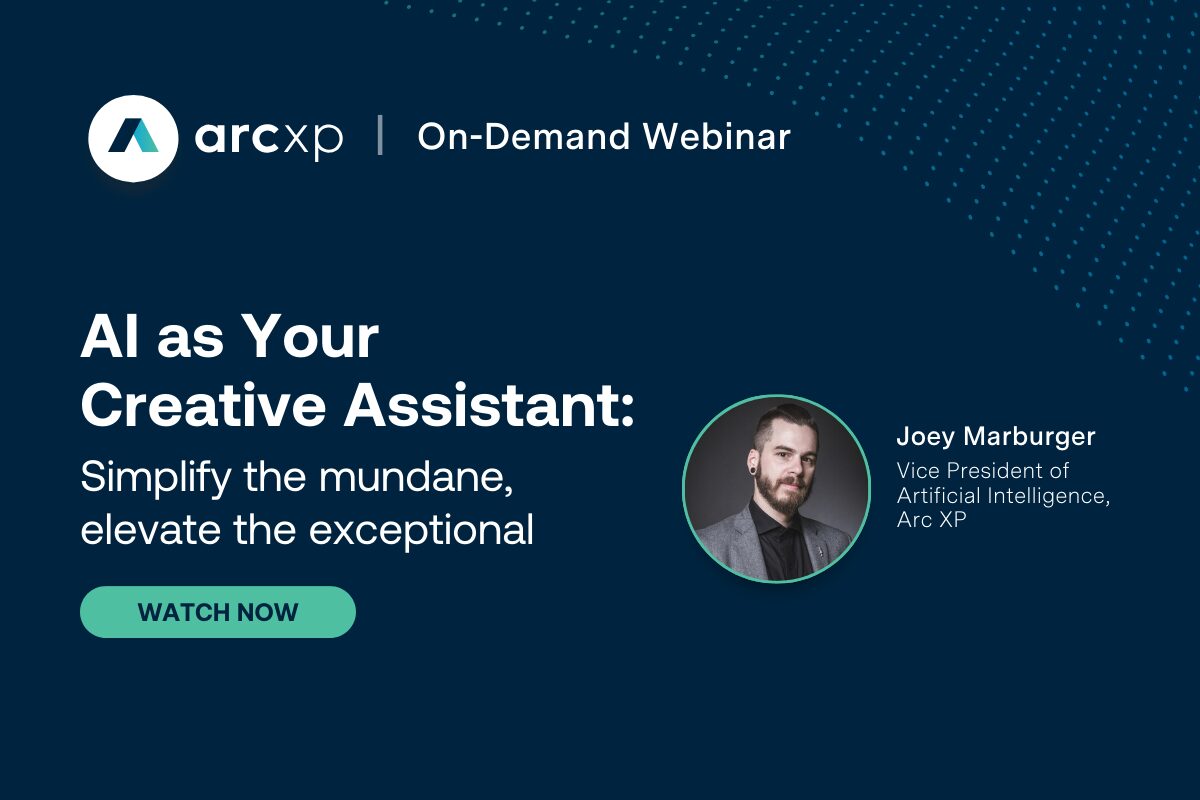3 reasons to retire your custom content management system

The build versus buy strategy question has been at the center of technology stack development for a long time. For those who went down the path of building, your custom CMS may have been fantastic at getting your digital first strategy off the ground and running, but over the years, those benefits have probably faded. Today, you may find that:
- Your IT team spends countless hours on CMS maintenance (with no time for proactively optimizing).
- Your developers struggle with outdated infrastructure and legacy programming languages.
Meaning, these teams are more focused on keeping systems running rather than on addressing changes to SEO algorithms, accessibility requirements, and new design trends for a better user experience. As a result, site performance, content monetization, and advertising revenues all suffer.
Sound familiar? It’s a tale as old as the internet — and even if your homegrown CMS is relatively new, the cracks may already be starting to show. The good news is, moving to a managed CMS, like Arc XP Content, comes with more efficiencies and benefits than ever.
The right managed CMS partner assumes the work of infrastructure and CMS maintenance — with a hyper focus on staying ahead of evermore complex technology innovations. All so you can focus on delivering better content and better digital experiences to drive growth. If you’re still on the fence about the switch, consider these three key benefits.

Benefit 1: A managed CMS frees up development and IT teams for more important work.
Whether you’re dealing with a legacy on-premise system or a cloud-based platform, the time it takes to keep a homegrown CMS up and running can be substantial.
Large in-house infrastructure and delivery teams often devote full capacity to these responsibilities — from addressing issues and maintaining performance to staying abreast of technology updates. Smaller and mid-sized organizations, especially, are forced to choose between devoting time to more proactive, strategic optimizations — or simply keeping the train on the tracks.
With a house-built CMS, development resources are stretched, too. Oftentimes, legacy features built in older programming languages mean major hurdles when onboarding new team members. And even if you can maintain a team of veteran developers, they could still face related inefficiencies (after all, programming languages become obsolete for a reason). It’s hard to find technical talent that wants to work with older languages like PHP when the majority of developers want to work with modern languages and frameworks.
With a managed CMS, development teams can focus their time on more rewarding, forward-looking and data-driven initiatives that have the power to boost revenue and employee satisfaction.
Such was the case with Canada’s The Globe and Mail. After making the move to Arc XP, the news publisher reallocated internal resources (previously responsible for platform upkeep) to new product development.
Built on AWS, Arc XP’s robust API-driven architecture enabled The Globe to build services directly on top of Arc XP’s APIs and Amazon Kinesis streams, unlike the black box development on top of other, proprietary CMS systems. That was a “green-field opportunity” for the publisher — a chance to completely rethink everything from site design to fundamental data structure.
This shift in focus led to the development of one of The Globe’s most innovative data science products — Sophi.io, an AI-powered business intelligence tool. The data from Sophi has helped editors make real-time decisions about how to promote stories and power personalization logic.
Leaders at The Globe say the CMS switch enabled a 30% increase in site engagement and a 50% decrease in page load time.

Benefit 2: A managed CMS improves performance and reduces your total cost of ownership.
If you’ve ever been intimately familiar with a custom CMS, you’ll know that most are unwieldy and overbuilt. What’s more, they’re often loaded with what industry pros know as “tech debt”: a burden that grows over time when development teams rush to expedite functionality or product deliveries at the expense of clean, organized code.
It’s just one of many reasons that the cost of a custom CMS can balloon over time — long after the initial build. Add to that the hard costs associated with aging infrastructure; the burden of finding and training IT teams and developers to work with antiquated systems; and the opportunity cost of exhausting your resources on maintenance and upkeep rather than improvements. It all makes for one very expensive and cumbersome asset.
Things get even more costly when your organization relies on a multi-vendor system. This was a challenge at El Financiero, one of Mexico’s top news outlets. Beyond the hassle of dealing with a complex digital experience stack, CMS limitations hampered El Financiero’s ability to deliver a top-of-the-line user experience.
Shifting site hosting, management and maintenance to Arc XP’s single-cloud AWS solution provided immediate cost efficiencies and the infrastructure stability El Financiero needed to focus on its growth goals. Within just three months of going live with the new site, the publisher achieved record-breaking site traffic — and 44.2% year-over-year growth.
To realize maximum cost efficiencies, publishers should choose a managed CMS with a proven track record of performance and innovation (and the financial health to back it up). With a partner like Arc XP, you’ll be plugged into a deep and broad pool of resources at a fraction of the cost of building that same capacity in house.

Benefit 3: A managed CMS allows your organization to be more flexible and capitalize on new opportunities faster.
If making major site updates via an antiquated, custom CMS is like steering the Titanic, moving to a managed CMS feels like a speed boat cruise. For one, a good managed CMS solution can eliminate red tape and cumbersome hierarchies from the publishing and web update process. Developers no longer fielding tedious internal requests are freed up for more important tasks.
Organizations that make the switch to a managed CMS have seen their product development resources effectively doubled, thanks to a continuous stream of feature rollouts, product updates and extensive support from their CMS provider.
But perhaps most importantly, it’s the CMS features themselves that enable publishers to stay one step ahead in the race to win eyeballs and engagement. El Financiero experienced this firsthand, in the face of an aggressive site launch timeline ahead of Mexico’s 2021 elections. They met their goal — going live with the new site a mere four months after the ink dried on their contract with Arc XP.
It’s thanks to flexible and modular features that allow publishers to move more quickly than ever — responding to shifting media consumption behaviors to maintain a sharp competitive edge. Fortunately for El Financiero and other publishing clients, many of Arc XP’s tools and features were designed with them in mind (thanks to roots at The Washington Post).
Publishers on the hunt for a managed CMS partner should keep this top of mind: sought after features like live-streaming support, multisite management and omni-channel capabilities, workflow orchestration, and asset management are crucial to the rapid creation and deployment of top-notch digital experiences.
Making the switch
Pulling the trigger on a digital overhaul can be daunting. But the cost of stalling could be significant. With audience behaviors changing every day, publishers must stay nimble and on top of trends — something that can be very difficult to do with a custom-built CMS and solely in-house team. Learn more about the benefits of Arc XP’s agile content management platform and talk to an expert today.
Recent resources





